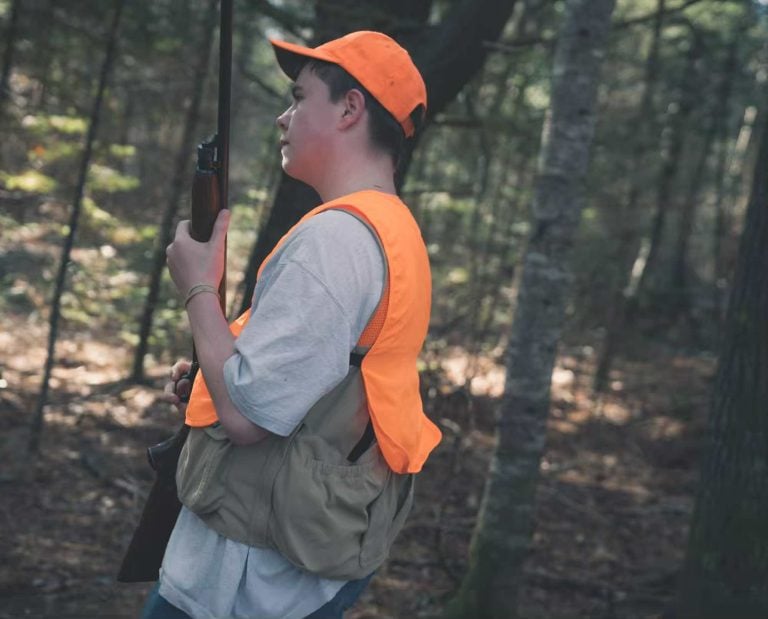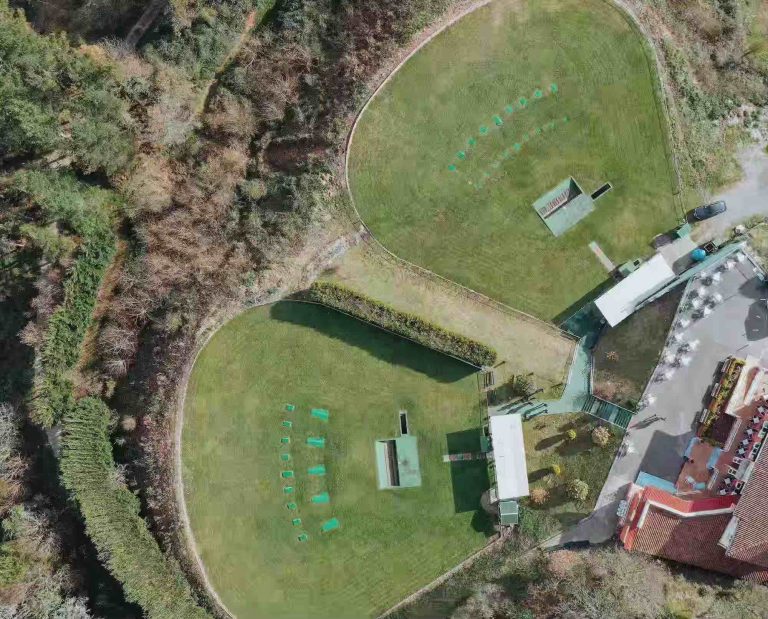16-Gauge Shotguns – Selection, Ballistics, History, and More
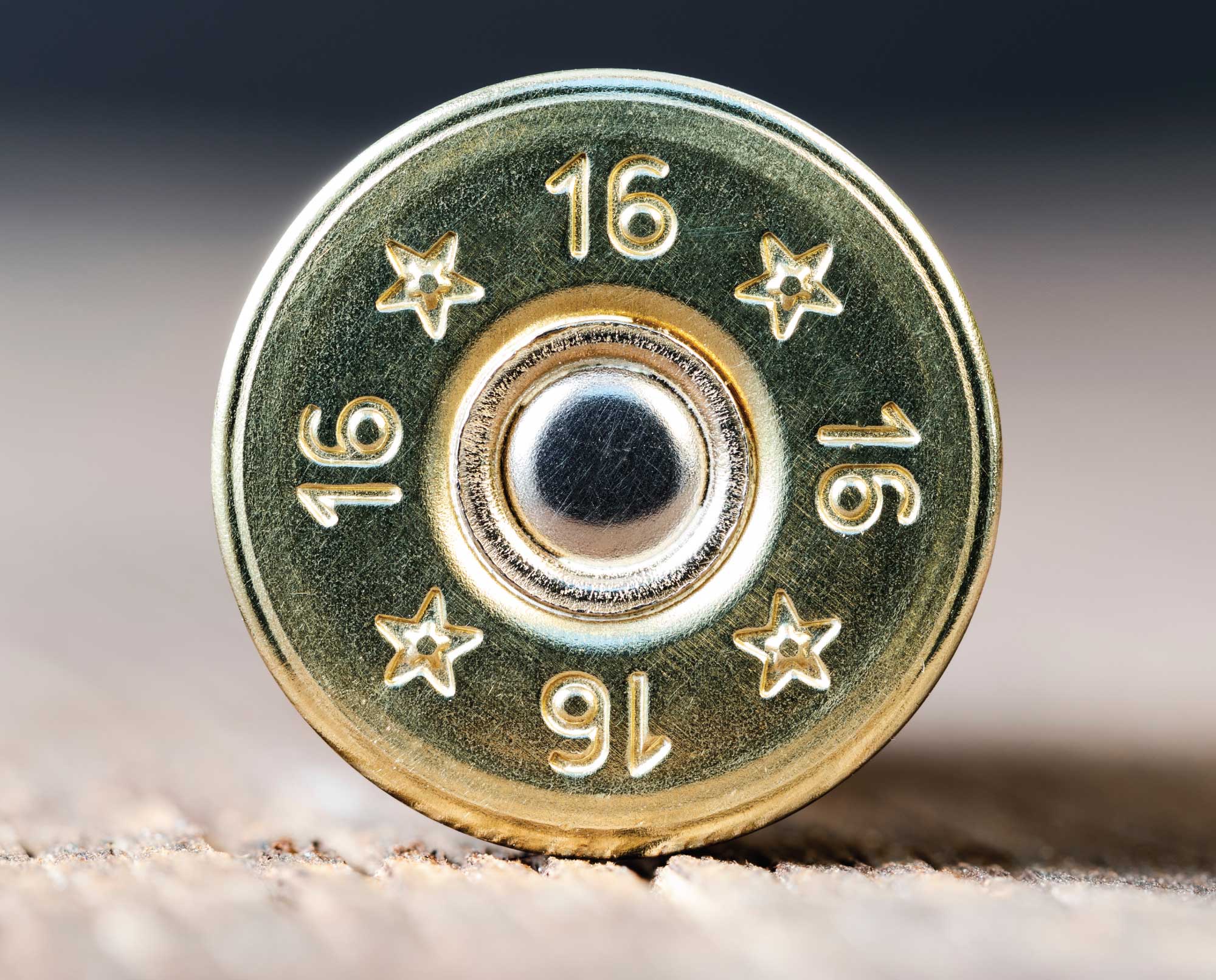
Take a look at the history, culture, and current offerening of 16-gauge shotguns
One of history’s most famous 16-gauge shotguns was known as “The Little Gun.” It was built by Parker Bros in 1889 and “was billed to Mr. D. W. Parker, then treasurer of the Parker Company.” In 1893, it went to Everel Harnden, the grandfather of the famous “godfather” of ruffed grouse hunting, William Hardnen Foster. Foster would shoot his first grouse on the wing with it at 12 years old in 1898 before he went on to write the iconic classic, New England Grouse Shooting, published in 1942.
For the most part, the 16-gauge probably garnered its popularity in the United States by pellet counts. Classic American manufacturers like Parker Bros, A.H. Fox, L.C. Smith, and others helped the gauge gain familiarity and popularity. The gauge peaked in American culture in the 1940s and 1950s when almost a quarter of all shotguns sold were 16-gauges. The 12-gauge accounted for just over 50 percent of shotguns sold at that time, according to author Layne Simpson of Shotguns & Shotgunning.
In the 2023 North American Upland Hunting Survey, the 16-gauge came in as the fourth most popular gauge, with 10.63 percent of modern upland hunters citing it as their preferred gauge. It was bested by the third-place 28-gauge by only half a percent. Among Millenials, it is the third most popular gauge, beating out the 28-gauge.
After researching this gauge, it’s hard to make a solid case for what came first — the chicken or the egg. Was it shotgun ammo manufacturers that made the availability of 16 gauges hit the shelves of Walmart? Or was it the cult following of Browning A5 that resurrected the “Sweet 16” at the right time? Who knows, but it happened.
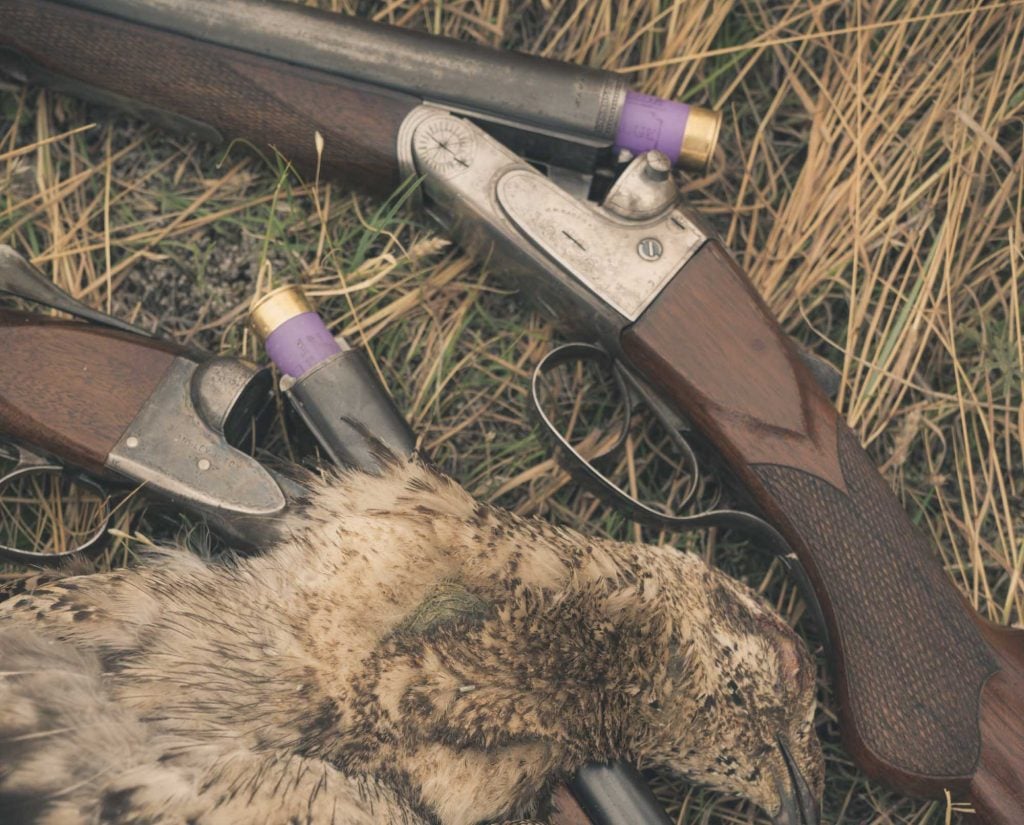
16-Gauge Bore Diameters
| Cylinder | .662” |
| Skeet | .658″ |
| Improved Cylinder (IC) | .665″ |
| Light Modified (LM) or Skeet II | .652″ |
| Modified (MOD) | .647″ |
| Improved Modified (IM) | .642″ |
| Full | .633″ |
The 16-Gauge Load and Ammunition
During the advent of the modern shotgun in the late 1800s, the standard 16-gauge load was 2 ½ drams, 1 oz shot, with a 2 ½ cartridge length. Today, both 1 oz and 1 ⅛ oz 2 ¾” loads are commonly found at gun shops. Despite what some people may tell you, the standard 1 oz 16-gauge load is not a “square load.” The discussion of “square loads” is more accurately a discussion between length and diameter ratio of the shot column in a load. Note that this differs from the black powder ratio, which accounts for both powder and shot.
Walking into your local sporting goods store and finding a box of 16-gauge shells was a rarity not five years ago; now, Walmart sells them along with most other ammo retailers. According to Cabela’s website in May of 2023, the store offers 12 types of 16 gauge ammo (not including shot size). In contrast, they offer 83 options for 12 gauge and 37 options for 20 gauges.
Regarding sub-gauges, the 16-gauge is by far the best patterning load. The L/R of a 16-gauge load is 1.41. Comparable, the 20-gauge is 1.68. Pattern efficiency is about seven percent greater than the 20-gauge and about nine percent better than the 28-gauge.
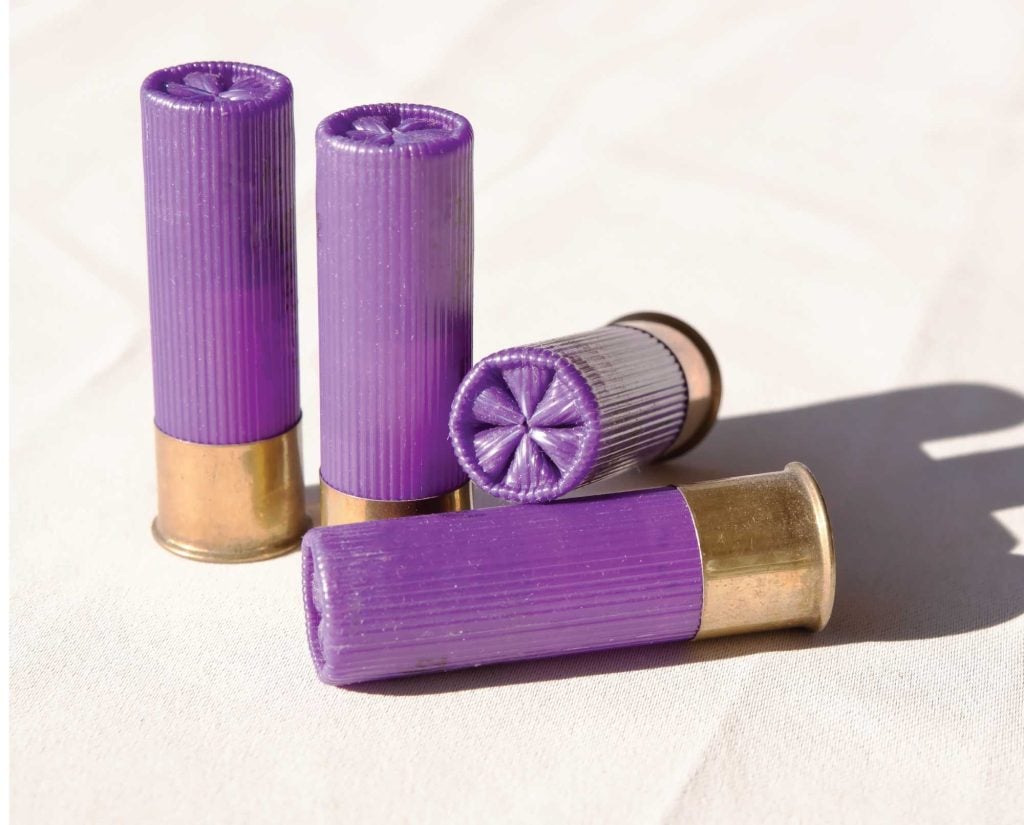
Using 1 oz. Federal Game Loads as a baseline for lead ammunition, a box of No. 6 16 gauge shells comes in at $20.99. That’s eight bucks more expensive than the 12-gauge equivalent, which is about $0.30 more per round. The velocity (FPS) comes in at 1165 compared to the 12-gauge’s 1290.
One of the greatest disadvantages of the 16-gauge is certainly ammunition selection. You can expect to pay a lot more when shopping for steel shot. Federal Speed Shok #2 comes at $37.99 for 16-gauge loads compared to the same ammunition for the 12-gauge at $20.99. Luckily, Kent Bismuth prices do not fluctuate as much as steel. 16-gauge #5 Kent Bismuth comes in at $59.99 versus its 12-gauge counterpart at $53.99.
Three-inch shells are virtually nonexistent for the 16-gauge. Some folks, myself included, would argue that’s a good thing. Remember our discussion of the length/diameter ratio? A 3” shell means more shot is packed in, resulting in pattern deformity and inferior patterns.
Modern Built 16-Gauge Shotguns
Just a decade ago, people were writing articles about the decline of the 16-gauge; that’s no different than what W.W. Greener wrote in 1897. However, these writers provide evidence that the 16-gauge’s popularity depending on performance, nostalgia, or a little of both, is timeless. The gauge has some handicaps; for example, it’s not recognized in skeet classes. Additionally, the cost of ammunition is high in some cases, yet the gauge still carries on. Despite these disadvantages, modern shotgun manufacturers have embraced the trend and increased the availability of 16-gauges.
Best Side-by-Side 16-Gauge Shotgun Models
The 16-gauge is most popular in the form of side-by-side shotguns. There is no doubt the side-by-side renaissance has helped its case. From vintage side-by-sides to modern builds, there are some great options to get into 16-gauges at various levels.

The Upland Gun Company RFM Custom Built Zeus 16-Gauge
Most shotgun enthusiasts are not used to seeing the words “custom built” alongside affordable price tags like the Upland Gun Company Zeus. This Italian-built 16-gauge side-by-side starts at $1,999. It’s built to your measurements with fixed chokes you get to choose from, mono-bloc barrels, double triggers, a pistol grip, and a coin finish. The add-on options are endless, although the base build is a wonderful shotgun. You can add a straight stock for $200 and your initials for only $150. Change to a single trigger, or maybe upgrade the wood; many options exist.

The Upland Gun Company RFM Custom Built Venus 16-Gauge
Starting at $3,299, Venus 16-gauge comes in at six pounds, making it a fine grouse gun for those looking to shave off every ounce. Like the Zeus, it comes built to your dimensions, with the base model having an English straight stock.

CZ Sharp-Tail 16-Gauge Side-by-Side Shotgun
Although CZ USA no longer lists the CZ Sharp-Tail 16-gauge as being in production, it is still available in many locations. They are becoming increasingly difficult to find, but they hover around $1,099 when you can find one. The 28-inch barrel, single trigger, pistol grip 16-gauge comes in at 7.3 pounds.
While you might be saving money initially, overall, you will pay for this purchase in both weight and long-term performance. I have had issues with the safety loosening and firing pin issues, but that was after shooting a solid thousand rounds. However, it’s something to remember based on how much you expect to use your CZ Sharp-Tail.
Best Over-and-Under 16-Gauge Shotguns
From the Stevens 555 to the Franchi Instinct line, the 16-gauge gets plenty of love in the over-and-under realm as manufacturers offer various price and quality levels to those hunting for their next 16-gauge shotgun.

Stevens 555 16-gauge Over/Under Shotgun
The Stevens 555 16-gauge was a big hit when it was first released. The Silver model starts at $749.99, followed by the Stevens 555 E at $849.99. The Silver comes in at 6 lbs, 6 ounces. The Stevens 555 E 16-gauge shotgun comes in at 6.45 lbs. Both are advertised as ambidextrous and chambered for 2 ¾” rounds. For those looking for the most affordable 16-gauge over/under shotgun, the Stevens 555 is the way to go.

Franchi Instinct 16-gauge Over/Under Shotguns
I have a soft spot for the Franchi Instinct line. It was the first over/under shotgun I bought and the only one I have not sold off. Coming in at 5.8 lbs, the Franchi Instinct SL makes for an excellent grouse gun. With an MSRP of $1,799, it is more expensive than the Stevens, but the overall quality of this shotgun is higher. The 16-gauge is also available in the Instinct Sideplate model (MSRP $2,399) and the Instinct SLX (MSRP $2,249).

The Upland Gun Company RFM Built Sk Field Over/Under 16-gauge Shotgun
Upland Gun Company released their over/under options in 2022. The SK Field is custom-built to your measurements and has many custom options. The base model comes in at $2,199 and can even have two triggers when you build it online. The shotgun weighs roughly 6.5 lbs in the 16-gauge option and can be a great upland hunting shotgun with endless custom options.
Best Semiautomatic 16-Gauge Shotguns
The availability of 16-gauge shotguns is most limited regarding semiautomatic actions. Browning is the dominant manufacturer of a semiauto 16-gauge. However, TriStar offers an affordable, entry-level option. Interestingly enough, one could argue the most recent revival of the nostalgic 16-gauge shotgun has been driven by the Browning A5 “Sweet 16” that won over the generation that missed the 16-gauge shotgun hay day.

Browning A5 Semiautomatic 16-Gauge Shotgun
Coming in various options, the Browning A5 16-gauges start at $1,679.99 and go as high as $2,149.99, based on which of the A5 “hump back” models you are interested in. Some models weigh under six pounds, and others are roughly over that mark. From classic wood finishes to various camouflage patterns, many options are available. The Browning A5 is most known for its recoil-operated Kinematic Drive System. Their recoil-operated shotguns dominated the market before the Italian-built Inertia designs took over.

TriStar Viper G2 Semi Automatic 16-gauge Shotgun
In contrast to the Browning A5, the TriStar Viper G2 is built as a gas-operated action and weighs 6.5 lbs. Coming in at an MSRP of $639, the TriStar is known for its entry-level prices. As a result, one can expect to sacrifice performance, and I would be wary of anyone looking for heavy use of this 16-gauge shotgun model.

16-Gauge Pump Shotgun Options
The only modern large production 16-gauge pump shotgun is the Browning BPS. Weighing 7.1 lbs, the Browning BPS 16-gauge starts at an MSRP of $729.99. If vintage pump guns are your thing, the Winchester Model 12 and the Ithaca Model 37 are worthy 16-gauge shotguns. One can expect to pay a wide range of prices based on the condition, but they are frequently available.
Looking Back on the 16-Gauge Shotgun in History
I assumed the 16-gauge was very popular at some point in history. I dug as far back as the London Gun Trials of 1879, and the 16-gauge never surpassed the 12-gauge in popularity. Sure, it enjoyed times of more significant popularity, but there was never a moment that set it well ahead of the 12-gauge. Curiously, in those very trials, the final “figure of merit” on the best shotgun made was, in fact, a 16-gauge with a score of 266.52 points. This score was calculated using a combination of patterns, pattern deviation, recoil, and velocity. The 20-gauge beat out the 12-gauge by only 1.68 points.
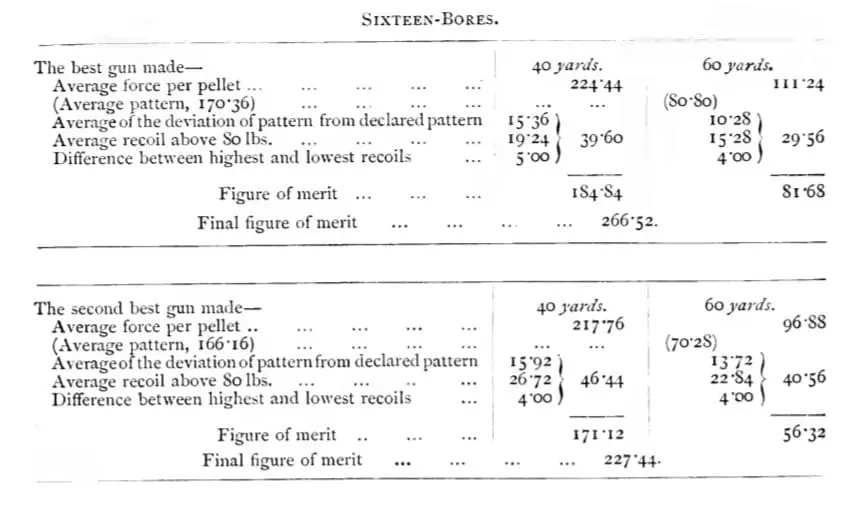
In W.W. Greener’s 1897 book The Gun and its Development, he writes, “The 16-BORE GUN was at one time a favorite with Continental sportsmen, who now for the most part, prefer the 12-bore; for use in England probably not one gun in five hundred is made 16-bore.” It’s also important to note the lack of popularity of the 20-gauge at that time: “The 20-BORE has been strenuously advocated by writers in the sporting papers, but there are very few sold — the proportion is perhaps one 20-bore to twenty of 16-bore,” wrote Greener.
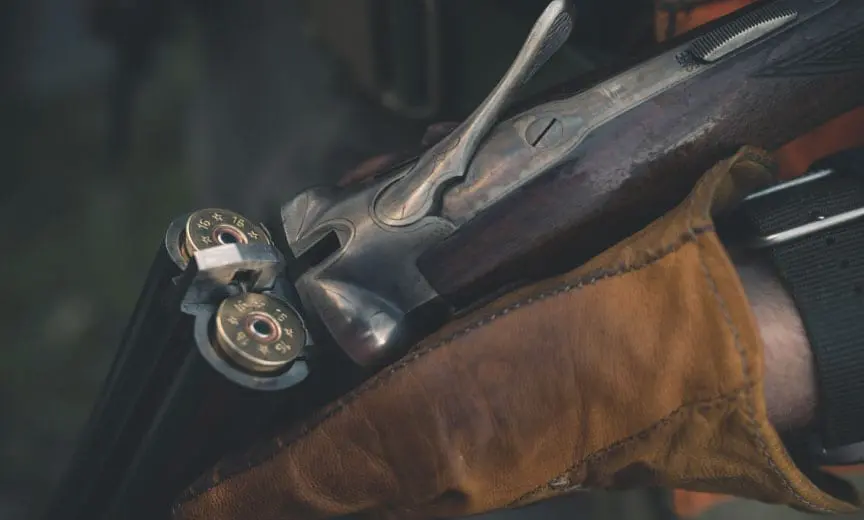
In Modern Shotguns, Greener wrote that “a 16-gauge with 3o-inch barrels may weigh 6 ¾ lbs, and be made a powerful weapon, but 6 ½ lbs, is the full average weight; if with 28-inch barrels 6 ¼ or even 6 lbs. ; with 25-inch barrels, and built as a miniature gun, 5lbs. 2 ozs.”
Although I do not see any 16-gauges staying in my gun safe past my great grandfather’s Belgium guild hammer gun, that does not mean it’s a bad gauge. Truthfully, my small frame is better suited to 20- and 28-gauges. But what doesn’t work for one person might work for another. If you can shoot it straight and find shot shells, enjoy hunting and shooting with your 16-gauge. I’m sure we’ll be hearing about a rise in the popularity of 16-gauge shotguns again.





